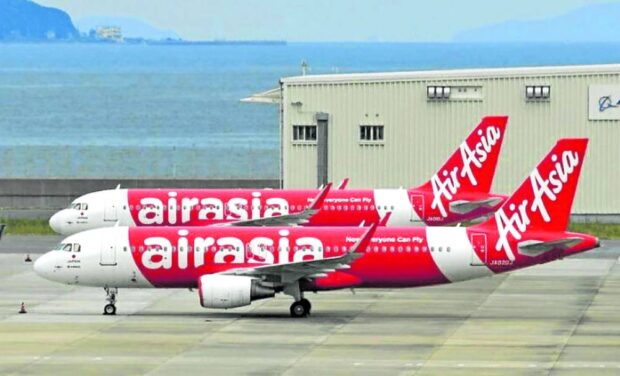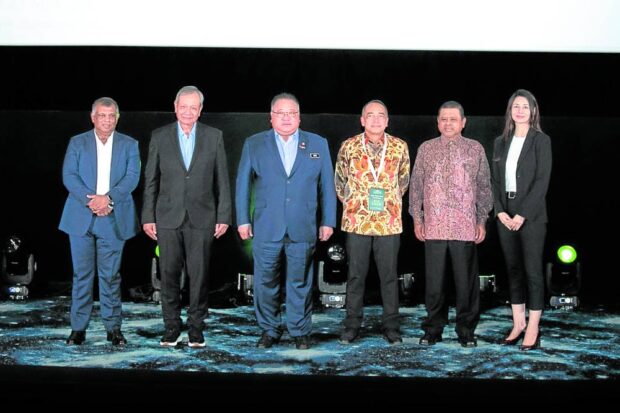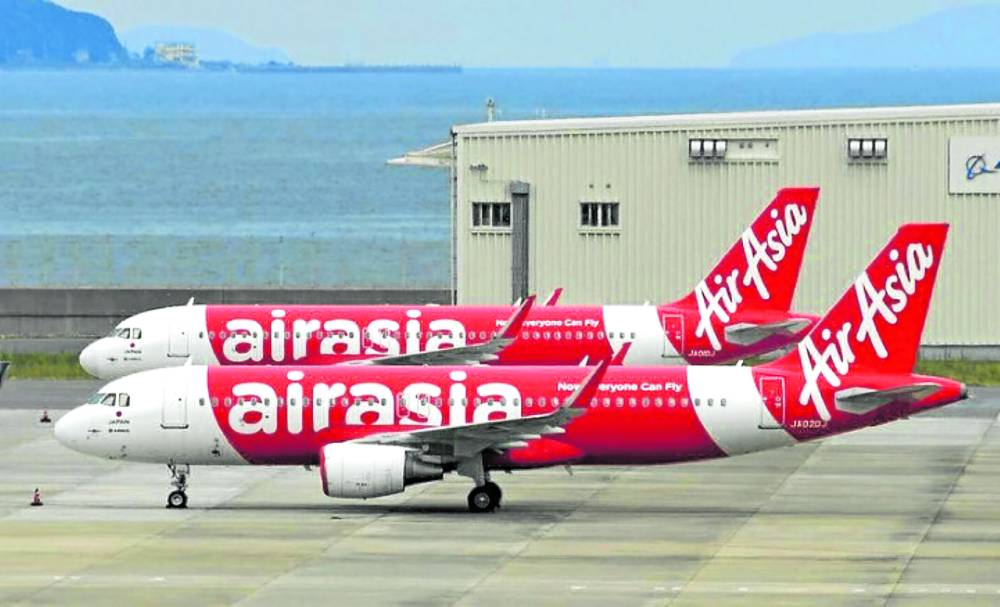
NO TRAIN, NO PROBLEM Asean Explorer Pass aims to simplify air travel and encourage travelers to explore less-known destinations in the region. —CONTRIBUTED PHOTO
In a bid to shine the spotlight on other tourist destinations in the Association of Southeast Asian Nations (Asean), the Asean Business Advisory Council (BAC) has teamed up with budget airlines to help travelers explore hidden gems in all corners of the region.
The Asean-BAC brings into focus intra-regional tourism as an engine of growth toward a more prosperous bloc.
Nazir Rasak, chair of the Asean-BAC of Malaysia, says there’s a collective vision for a borderless Asean, which hosted 100 million international tourists in 2023. He adds that the region can be a place where barriers give way to bridges and flights, while celebrating diversity as its greatest strength.
After all, Asean comprises 10 countries (Brunei Darussalam, Burma, Cambodia, Indonesia, Laos, Malaysia, Philippines, Singapore, Thailand and Vietnam), each with less-known destinations just waiting to be discovered
Flagship product
He adds that the resurgence of travel—already at 70 percent of the prepandemic levels—combined with strengthened regional ties, will allow Asean to diversify and benefit from robust tourism.
AirAsia MOVE, a digital venture by Capital A Berhad, seized the opportunity to collaborate with Asean-BAC to promote business and tourism within the region through its flagship product, the Asean Explorer Pass.
This initiative aims to simplify travel and encourage Southeast Asians to explore destinations where AirAsia flies. It offers travelers a flexible and cost-effective way to explore multiple destinations within the Asean region through one platform, AirAsia MOVE. The pass is designed to encourage longer stays, multiple visits and increased travel frequency.
For an annual subscription of P14,888, travelers can book up to three roundtrip flights per month within Asean with zero-base fare flights on international AirAsia flights. A passenger can fly from Manila to Bangkok, Kota Kinabalu and Kuala Lumpur; Malaysian cities can be a jump-off point to other cities like Hoi An in Vietnam, or Yangon in Myanmar.
As an additional perk, the pass comes with unlimited use of an exclusive promo code to avail up to 50 percent discount on more than 900,000 hotels. But passengers still need to pay for optional add-ons, airport charges, taxes and regulatory fees, or any applicable charges.

MOVERS AND SHAKERS From left: Tony Fernandes, CEO of Capital A and MOVE Digital executive chair; Oudet Souvannavong, Laos Asean BAC chair; Tiong King Sing, Malaysian minister of tourism, arts and culture; Nazir Razak, Malaysian Asean BAC chair; Manoharan Periasamy, director general of Tourism Malaysia and Nadia Omer, AirAsia MOVE CEO —CONTRIBUTED PHOTO
Tony Fernandes, CEO of Capital A and executive chair of MOVE Digital, shares that it has always been his main goal to make the region “much smaller” by moving people to every known destination with AirAsia or what he calls, the “Asean airlines.”
As a kid, he fondly remembers exploring Europe using the Eurail pass, where one could move around the land-locked continent (33 states are now included) on a train.
“So I was always saying, ‘how can we do it on a plane because the train won’t take you everywhere [here in Southeast Asia]?’ So we came up with this pass called the Asean Explorer pass,” the 60-year-old tycoon says.
Fernandes describes the Asean region as an “exciting, booming place.”
“Everyone knows Bangkok. Everyone knows Bali. Everyone knows Singapore. But there are many places that you have never been to. So we want to encourage all of you to try and travel around the whole of us here,” he says.
Top destinations
A traveler trends survey by AirAsia MOVE revealed that among the top destinations in 2023 were Kuala Lumpur and Kota Kinabalu in Malaysia, Bangkok and Chiang Mai in Thailand and Manila in the Philippines.
Data also show that most Asean travelers put a premium on “value” for their money and for the new experience, as well. “Value evidently remains as one of the determining factors for user loyalty in the travel sector,” says Nadia Omer, CEO of AirAsia Move.
The pass, Fernandes says, can also be a “great marketing tool” for more people to appreciate Asean countries. “I’ve always said [that the] Philippines is probably the most beautiful country in Southeast Asia, but not many people know about it. I don’t think this pass is gonna revolutionize tourism, but it’s gonna be a great marketing tool for people to know more about the Philippines,” he adds.
But there’s a caveat for the future users of the pass: availability of seats on flights depends on supply and demand on particular routes.
“Someone’s gonna say, ‘I tried to [book for] Bangkok but I couldn’t get a seat.’ That’s not the objective of this product. [If] Bangkok is not available, [then] try Chiang Mai or Chiang Rai. There will always be a seat to go somewhere,” the Malaysian entrepreneur explains.
To extend that further, AirAsia MOVE as an online travel agent (OTA) can facilitate a seamless travel experience by empowering travelers with options that cater to their specific needs. Its ecosystem includes OTA services such as flight bookings at over 700 airlines and 900,000 hotels world-wide plus ride-hailing, dining experiences, insurance plus a loyalty program.
AirAsia MOVE, a separate company from the airline, is already in talks with another national carrier to join the Asean Pass. Fernandes says that the ultimate goal is to give special benefits to travelers at partner hotels and restaurants. “So that you get to not just fly there, but you get to see more with your dollar,” he adds.
Technology and travel have paved the way to a more seamless way of planning a trip. Artificial intelligence (AI) has significantly eased the process of booking flights, hotels and activities. AI has turned the planning phase into an interactive experience wherein travelers get more value for their money through its recommendations. Omer says that AI gives access to travelers to options that could help them get the best deal
Fernandes adds that artificial intellgence (AI)-enabled personalization will spell a big difference in trip-planning by helping travelers minimize mistakes. The accuracy and flexibility, he says, that AI can offer will contribute to a tailor-made itinerary for every traveler.

